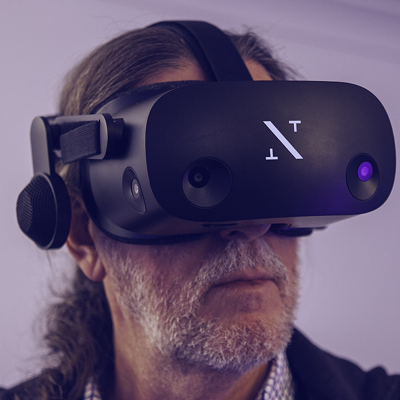In the realm of innovation, creative partnerships thrive when like-minded individuals or organisations with complementary skills unite to pursue a shared objective. These dynamic collaborations ignite novel and imaginative endeavours, as seen in the film industry, where the synergistic alliance between a director and a producer can be the very essence of a movie’s triumph.
Based on a comprehensive study analysing the Italian movie industry, researchers have identified four key factors that consistently emerge as strong indicators of success in creative partnerships.
- Shared Vision and Goals
- Complementary Skill Sets
- Effective Communication and Collaboration
- Trust and Mutual Respect
In the ever-evolving landscape of business, technology partnerships emerge as dynamic alliances between companies, joining forces to develop cutting-edge technology or seamlessly integrate existing solutions. These strategic collaborations offer a myriad of advantages, including access to untapped markets and channels, sharing of intellectual assets and infrastructure, and mitigating risk. With a staggering 95% of companies planning to streamline their tech tools in the coming year, seeking out technology partnerships presents a visionary response to the wave of consolidation sweeping the industry.
In the realm of innovation, partnerships wield a mighty influence, opening the door to a world of advantages. Innovation partnerships offer a plethora of benefits, ranging from cost-effective R&D, access to expertise and adaptability, to pioneering new markets. Such collaborations act as accelerators, propelling breakthroughs into reality at a pace that would otherwise require decades to achieve and commercialise. A staggering 94% of tech industry executives recognise innovation partnerships as an indispensable strategy.
When established businesses forge alliances with new players, industries soar from transformative concepts to pragmatic solutions, igniting rapid and streamlined innovation. In complex domains, these partnerships lay the groundwork, providing crucial support that fosters groundbreaking research and problem-solving innovation. The symbiotic nature of these partnerships fuels economic growth, creating a more skilled and empowered workforce, and ultimately driving society towards a future brimming with possibilities.
Innovation thrives on collaboration, as it breathes life into a plethora of perspectives, fosters knowledge exchange, sparks synergistic brilliance, speeds up iteration cycles, curtails risks, nurtures creativity, and unlocks a treasure trove of resources and expansive networks. Embracing collaboration empowers individuals and organisations to unleash their full potential, propelling profound advancements across multiple domains with purpose and impact.
Innovation collaboration serves as the nexus where individuals, organisations, and diverse disciplines converge, pooling their collective genius to generate novel ideas, unravel intricate problems, and craft visionary solutions that transcend conventional boundaries. This collaborative synergy lays the groundwork for tackling future challenges with ingenuity and out-of-the-box thinking.

Source: https://bit.ly/47rbBOy
Why Innovation Collaboration is Essential for Innovation
Varying Perspectives
Collaboration acts as a catalyst, uniting individuals with diverse backgrounds, expertise, and experiences. This amalgamation of perspectives fuels the exploration of unique ideas, alternative approaches, and groundbreaking solutions that defy convention. While a single tech partner can make a notable impact on your business, envision the transformative outcomes that arise when an array of perspectives, knowledge, and insights intertwine! Collaborators forge a tapestry of understanding, delving deeper into problems, seizing opportunities, and deciphering the complexities of future challenges with a richness and comprehensiveness unparalleled by individual efforts.
Sharing Knowledge
Through cross-domain collaboration, individuals contribute their distinct expertise and insights, enriching the collective knowledge pool. This interconnected web of ideas fosters the birth of pioneering concepts, strategies, and technologies that harmoniously merge diverse fields and disciplines.
Synergy and Complementary Strength
Collaboration emerges as the ultimate avenue for harnessing the strengths and resources of individuals or organisations. By harnessing the diverse skills and capabilities of collaborators, they can surpass the accomplishments that each individual could achieve in isolation. The power of synergy manifests as collaborators join forces, building upon one another’s contributions and exponentially magnifying their collective impact.
Faster Iteration and Feedback
Through collaboration, rapid iteration cycles come alive, offering a dynamic platform for real-time feedback and iterative refinement. As collaborators join forces, they swiftly test, validate, and enhance their ideas, drawing from the diverse perspectives and insights of their peers. This iterative process becomes the engine propelling innovation at an accelerated pace, fostering rapid experimentation and seamless adaptation.
Risk Reduction
Collaboration becomes a powerful tool in mitigating the risks inherent in innovation. By sharing the burden of experimentation and development, collaborators effectively distribute and alleviate risks across participating individuals or organisations. This shared risk approach enables the pursuit of bold and audacious endeavours that might have otherwise been deemed too perilous or financially burdensome for a lone entity to undertake.
Increased Creativity and Inspiration
Collaboration serves as the catalyst for igniting creativity and stimulating fresh perspectives. Through open discussions, vibrant brainstorming sessions, and exposure to diverse viewpoints, collaborators transcend the confines of conventional thinking, venturing into uncharted territories of innovation. This cross-pollination of ideas sparks a renewed energy, fostering an environment that celebrates experimentation and inspires groundbreaking solutions.
Access to Broader Networks and Resources
Collaboration unlocks a world of diverse networks and resources that may remain elusive when pursued individually. By joining forces, individuals and organizations gain access to a vast array of connections, spanning industry experts, academic institutions, research centers, and funding agencies. This expanded reach amplifies the prospects of unearthing new opportunities, accessing invaluable resources, and garnering support for groundbreaking endeavours.
In modern days, improving the products, services, and brand experience is one way to stay ahead of the competition. This is necessary to maintain market share and business growth. Additionally, companies must establish innovation development divisions for their own research and development which resulted in new products and service offerings.
Most companies will keep their innovation processes and programs a secret in order to not be immediately copied by rival companies. This is known as the Closed Innovation Program. It can be expensive in terms of salaries and technology development, and often not as fast as founder-driven start-ups.
Other known system is the Solo “Closed” Innovation. It entails the company to pool their resources, knowledge, and capabilities to solve a problem or develop a new product/service. Next is the Partnership “Closed” Innovation. This means that there are two or more organisations collaborating in solving a problem or developing a new product or service by pooling their resources, knowledge, and capabilities altogether. Last, it is the “Open” Innovation. This is a collaboration paradigm in which several organisations collaborate in an ecosystem for the mutual benefit of all members and stakeholders. It’s a group of organisations that collaborate to come up with ideas to solve problems and find innovative ideas or technologies to do so. Existing enterprises, start-ups, governments, universities, technical institutes, and other entities make up this collaborative, which works together to develop, test, and launch new technologies.
As previously stated, in the modern landscape, companies must be able to innovate and adapt to stay ahead of the competition. The best way to do achieve it is by taking advantage of technological solutions. From chatbots and machine learning to cloud computing and automation, technology can provide numerous benefits to various companies regardless of the size. It can also improve productivity and efficiency while also allowing businesses to better understand their customers and create more personalised experiences. There are many tools can help a company to reduce costs while also improving employee engagement and gaining customer satisfaction.
In order to improve efficiency, reduce costs, and stay ahead of the competition, companies are utilising technologies that offers numerous functionality to help achieve their goals. By doing so, they can streamline operations, automate time-consuming tasks, and achieve the ultimate goal: increased productivity. From cloud-based software to the latest hardware, these technologies helped companies to survive and thrive in the ever-changing landscape of the modern marketplace.
Technology is truly something to marvel at. It has revolutionised our daily lives from the way we interact, work, and live our lives. Furthermore, it also has the potential to transform a company and open up new opportunities like never before. By using the right tools and well-planned strategies, technology can help to optimise how a company’s processes, improve decision-making, and enhance communication. The possibilities are endless.
A partnership can also have impact on innovation. A business partner is a commercial actor that has some kind of alliance with another commercial actor. It does not necessarily have to be a person. The partnership is often regulated by a contract and with an exclusive bond that establishes that both parties do not have to ally with third parties.
Potential business partners can be a customer, a complementary vendor, a supplier or a reseller/agent.
Here are some examples of successful business partners:

Source: https://bit.ly/3FT7LlE
Red Bull & GoPro
Red Bull is an Austrian energy drink company founded in 1987. The CEO and the co-founder of the company are Dietrich Mateschitz. He has a marketing degree, and before Red Bull, he worked for Unilever, Belndax and P&G. During his travels for Blandax, he discovered Krating Daeng, the drink that a few years later became Red Bull.
Go Pro is a portable camera company that also develops mobile apps and video-editing software. Nick Woodman is the founder and CEO of GoPro who got the idea to invent the GoPro on a surf trip in Australia and Indonesia.
They are both (adventurous, fearless and extreme) “lifestyle” brands. These shared interests made them the perfect business partners.

Source: https://bit.ly/3FSmZaM
Starbucks & Spotify
Starbucks is an American multinational chain of coffeehouses and roastery reserves founded in 1971. In the early 1980s, Howard Schultz converted it from a coffee bean store into a coffee shop selling espresso-based drinks.
Today, the CEO is Kevin Johnson, a software engineer who worked for IBM, Microsoft and Juniper Networks.
Spotify is a Swedish audio streaming and media services provider founded in 2006 by Daniel Ek and Martin Lorentzon. Daniel Ek, the CEO, was born an engineer but later he focused on IT.
Starbucks created a coffee shop experience with the help of music to create an ambience. They wanted to create a “music ecosystem” allowing artists to easily have access to Starbucks consumers, and vice versa, allowing Starbucks to have access to Spotify’s discography.

Source: https://apple.co/467q2pW
Apple & MasterCard
Apple is an American multinational technology company founded by Steve Jobs, Steve Wozniak and Ronald Wayne in 1976. Tim Cook has been the CEO of the company since 2011. Since then, he was able to double Apple’s revenue and profits.
MasterCard is an American multinational financial services corporation. Michael Miebach is the CEO of the company and he is leading the company towards the digital.
When Apple launched the Apple Pay app, it completely revolutionised how people do transactions. In fact, Mastercard was the first company that allowed its customers to store their credit cards on Apple Pay.
There are many more success stories from partnership that drives innovation. They are the proof that partnership can also be the key factor in both innovation and business growth. Innovation is an ongoing process and it is crucial to be adaptable, open to changes, and willing to experiment. By incorporating these strategies, a company can position themselves for future success and maintain a competitive edge in the ever-evolving business landscape.
Conclusion
Creative and technology partnerships are essential in driving global innovation. By merging creative insights with technological capabilities, these partnerships unlock new possibilities, foster user-centricity, accelerate the innovation cycle, provide access to diverse perspectives, promote cross-industry collaboration, and drive scalable solutions with a global impact. Embracing these partnerships is vital for organisations and industries to thrive in an increasingly interconnected and rapidly evolving world.
Find out more on why and how you should work with a Creative and Technology Partner. Contact us now!










